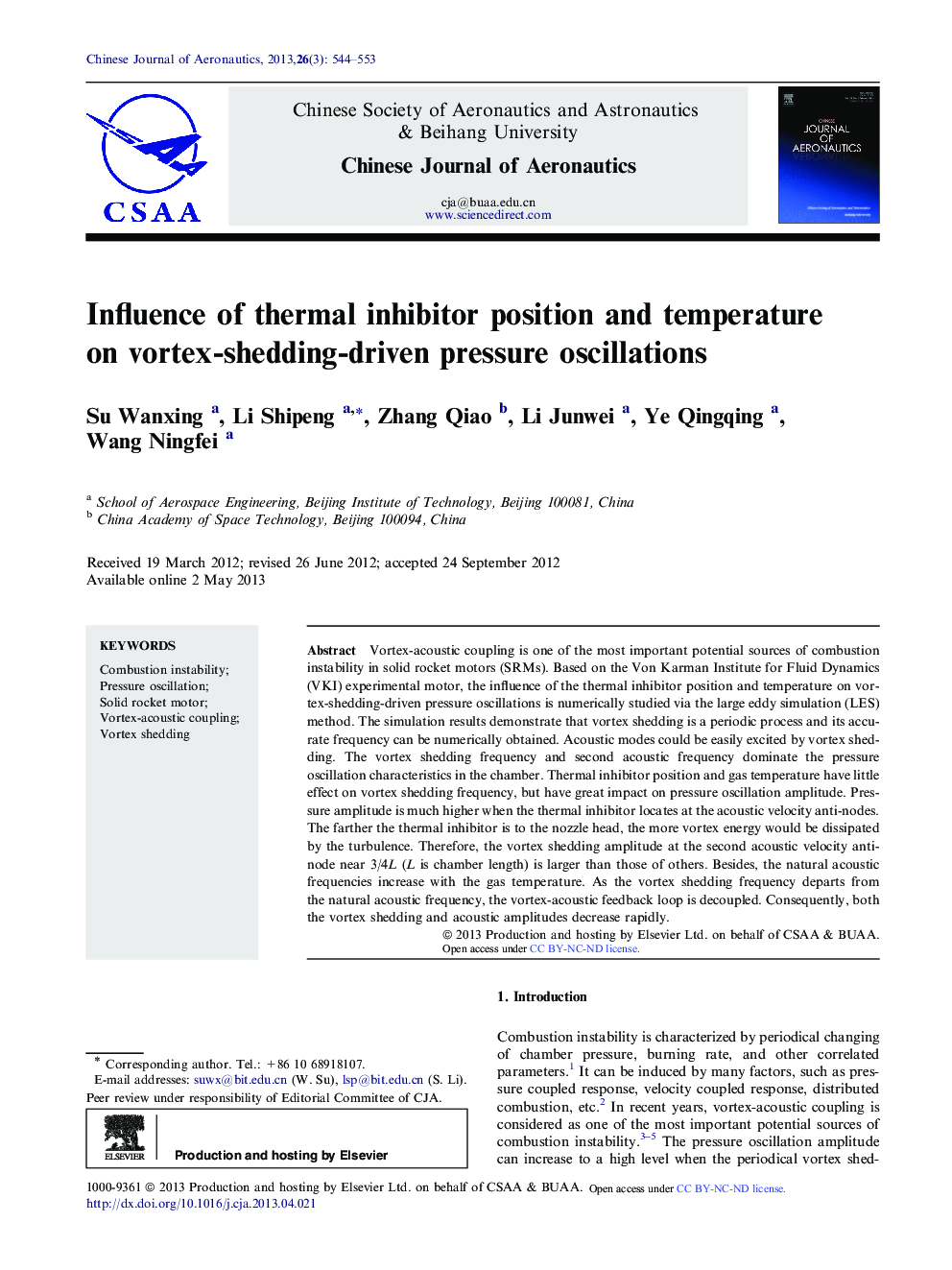| Article ID | Journal | Published Year | Pages | File Type |
|---|---|---|---|---|
| 755289 | Chinese Journal of Aeronautics | 2013 | 10 Pages |
Vortex-acoustic coupling is one of the most important potential sources of combustion instability in solid rocket motors (SRMs). Based on the Von Karman Institute for Fluid Dynamics (VKI) experimental motor, the influence of the thermal inhibitor position and temperature on vortex-shedding-driven pressure oscillations is numerically studied via the large eddy simulation (LES) method. The simulation results demonstrate that vortex shedding is a periodic process and its accurate frequency can be numerically obtained. Acoustic modes could be easily excited by vortex shedding. The vortex shedding frequency and second acoustic frequency dominate the pressure oscillation characteristics in the chamber. Thermal inhibitor position and gas temperature have little effect on vortex shedding frequency, but have great impact on pressure oscillation amplitude. Pressure amplitude is much higher when the thermal inhibitor locates at the acoustic velocity anti-nodes. The farther the thermal inhibitor is to the nozzle head, the more vortex energy would be dissipated by the turbulence. Therefore, the vortex shedding amplitude at the second acoustic velocity anti-node near 3/4L (L is chamber length) is larger than those of others. Besides, the natural acoustic frequencies increase with the gas temperature. As the vortex shedding frequency departs from the natural acoustic frequency, the vortex-acoustic feedback loop is decoupled. Consequently, both the vortex shedding and acoustic amplitudes decrease rapidly.
